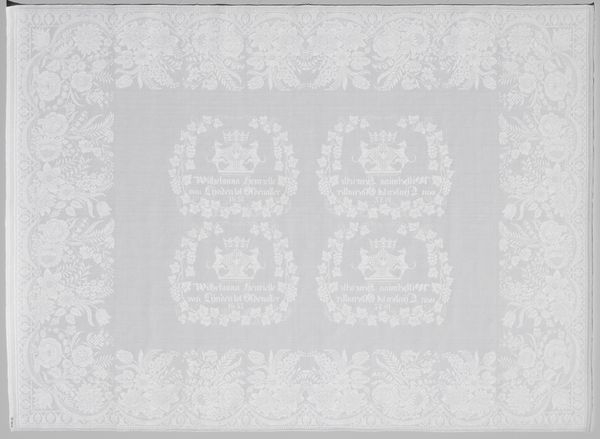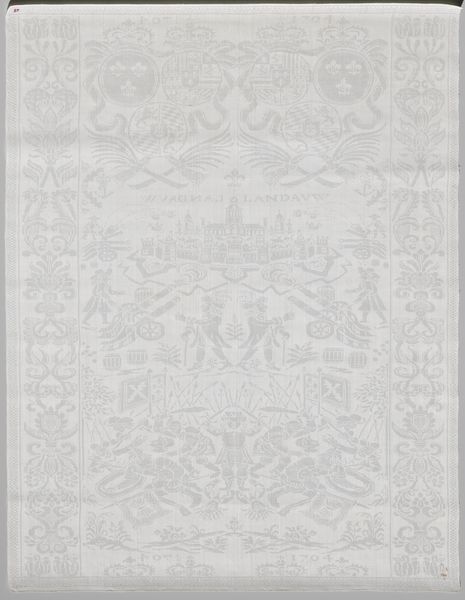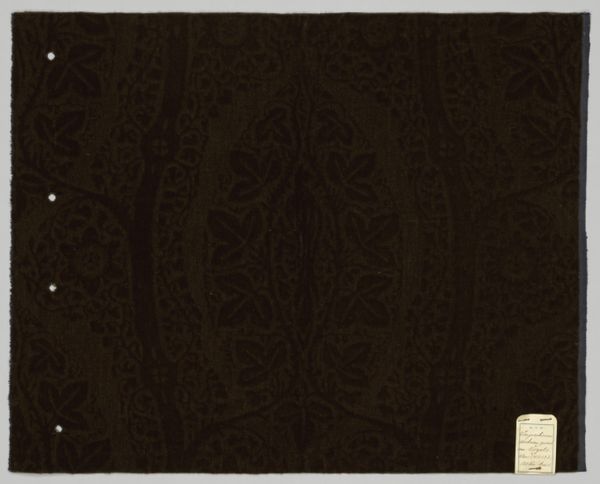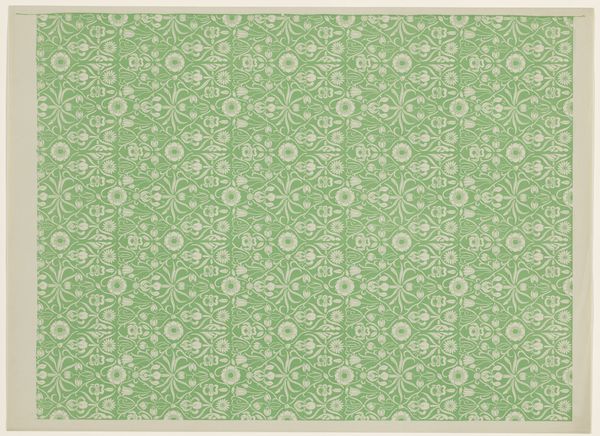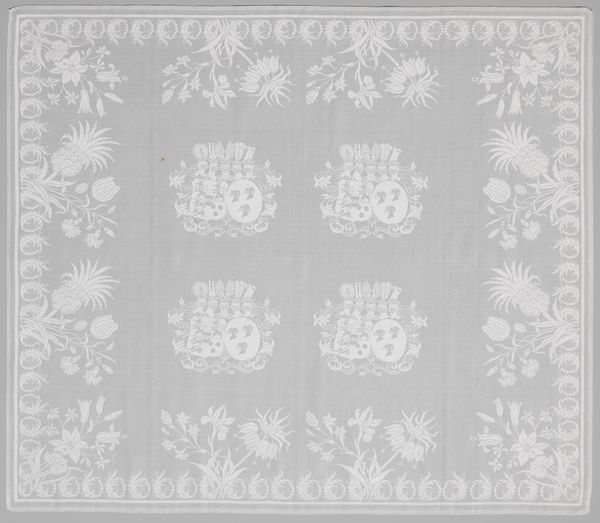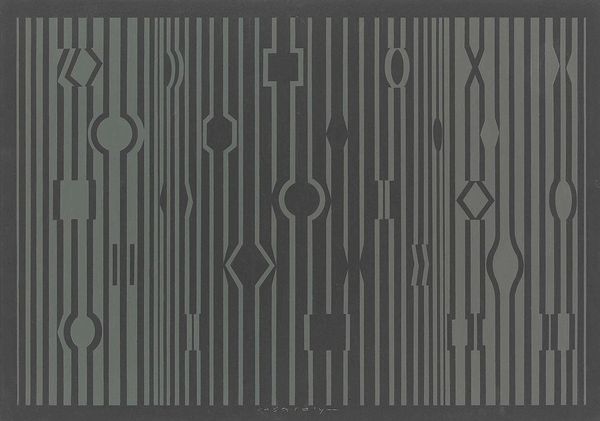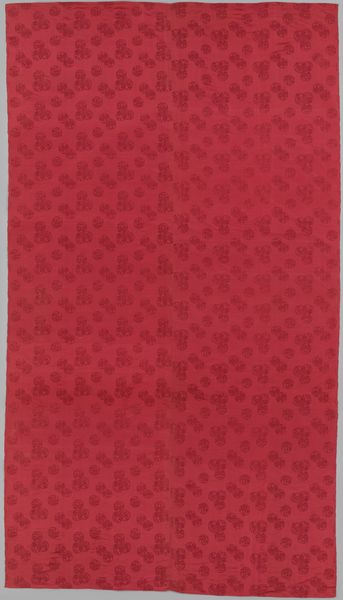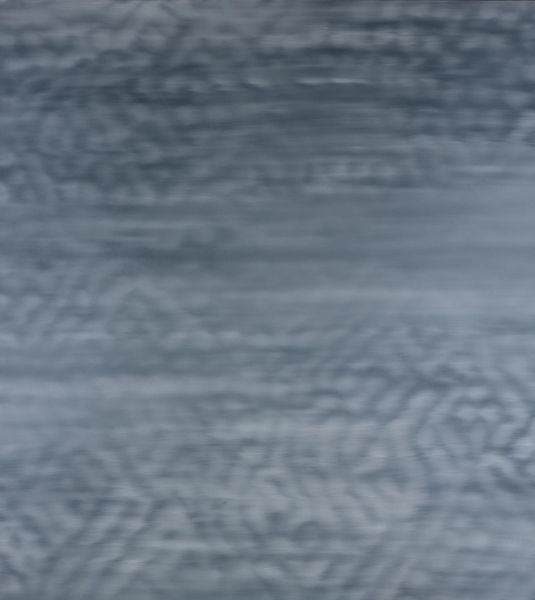
textile
#
baroque
#
textile
#
organic pattern
#
textile design
#
decorative-art
Dimensions: width 113 cm, height 90 cm
Copyright: Rijks Museum: Open Domain
Editor: This is a linen napkin, “Servet met het wapen van Cornelis Hop,” from around 1700 to 1724. It’s at the Rijksmuseum, and the artist is unknown. The whole thing is white on white and reminds me of frosted glass. What strikes you when you look at it? Curator: Initially, I am drawn to the intricate balance of positive and negative space. Observe how the crest, centered amongst the floral patterns, creates a focal point, while the repetitive border designs act as framing devices, containing the dynamism within. Do you notice any specific contrasts in texture? Editor: Well, the crest itself looks very dense with detail, compared to some of the looser floral swirls. The border also feels more geometric and defined. Curator: Precisely. This contrast isn't accidental. Semiotically, the rigid border could be interpreted as representative of social order and containment, setting limits to wild expression found on its inside. And how the textile has survived throughout the ages and can be read like an encrypted cultural memory. What do you think about this interplay? Editor: That's a really interesting thought about the border. I hadn’t considered that level of symbolism, but I agree. The border contains the crest but emphasizes it even more. Curator: And notice that although we identify the patterns of organization, symmetry, repetition, and mirroring, there's still a touch of arbitrariness which evokes natural motifs, therefore questioning pure geometrical interpretation. Editor: This way of breaking it down visually really unlocks layers of the piece. Curator: Indeed. Sometimes an analysis that privileges visual and structural composition can create new perspectives on decorative art, revealing complexity where you wouldn’t otherwise expect.
Comments
No comments
Be the first to comment and join the conversation on the ultimate creative platform.
